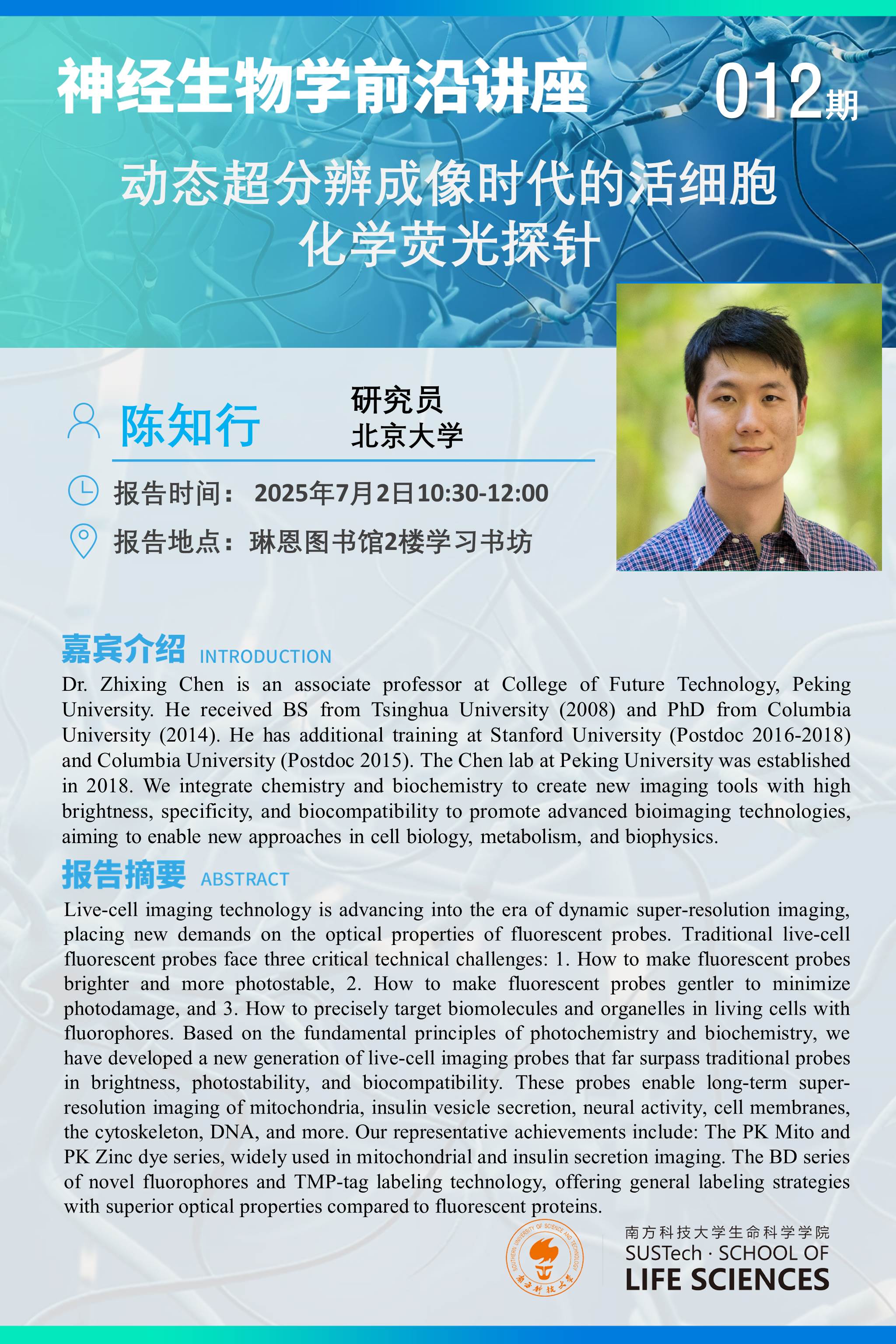
Speaker: Prof. Zhixing Chen
Time: 10:30-12:00 AM, 2 July (Wednesday)
Venue: The Learning Studio
Topic: Live-cell fluorescent probes for dynamic super-resolution imaging
Speaker: Prof. Zhixing Chen
Time: 10:30-12:00 AM, 2 July (Wednesday), 2025
Venue: The Learning Studio (2F Lynn Library)
Abstract:
Live-cell imaging technology is advancing into the era of dynamic super-resolution imaging, placing new demands on the optical properties of fluorescent probes. Traditional live-cell fluorescent probes face three critical technical challenges: 1. How to make fluorescent probes brighter and more photostable, 2. How to make fluorescent probes gentler to minimize photodamage, and 3. How to precisely target biomolecules and organelles in living cells with fluorophores. Based on the fundamental principles of photochemistry and biochemistry, we have developed a new generation of live-cell imaging probes that far surpass traditional probes in brightness, photostability, and biocompatibility. These probes enable long-term super-resolution imaging of mitochondria, insulin vesicle secretion, neural activity, cell membranes, the cytoskeleton, DNA, and more. Our representative achievements include: The PK Mito and PK Zinc dye series, widely used in mitochondrial and insulin secretion imaging. The BD series of novel fluorophores and TMP-tag labeling technology, offering general labeling strategies with superior optical properties compared to fluorescent proteins.
Brief introduction of the speaker:
Dr. Zhixing Chen is an associate professor at College of Future Technology, Peking University. He received BS from Tsinghua University (2008) and PhD from Columbia University (2014). He has additional training at Stanford University (Postdoc 2016-2018) and Columbia University (Postdoc 2015). The Chen lab at Peking University was established in 2018. We integrate chemistry and biochemistry to create new imaging tools with high brightness, specificity, and biocompatibility to promote advanced bioimaging technologies, aiming to enable new approaches in cell biology, metabolism, and biophysics.